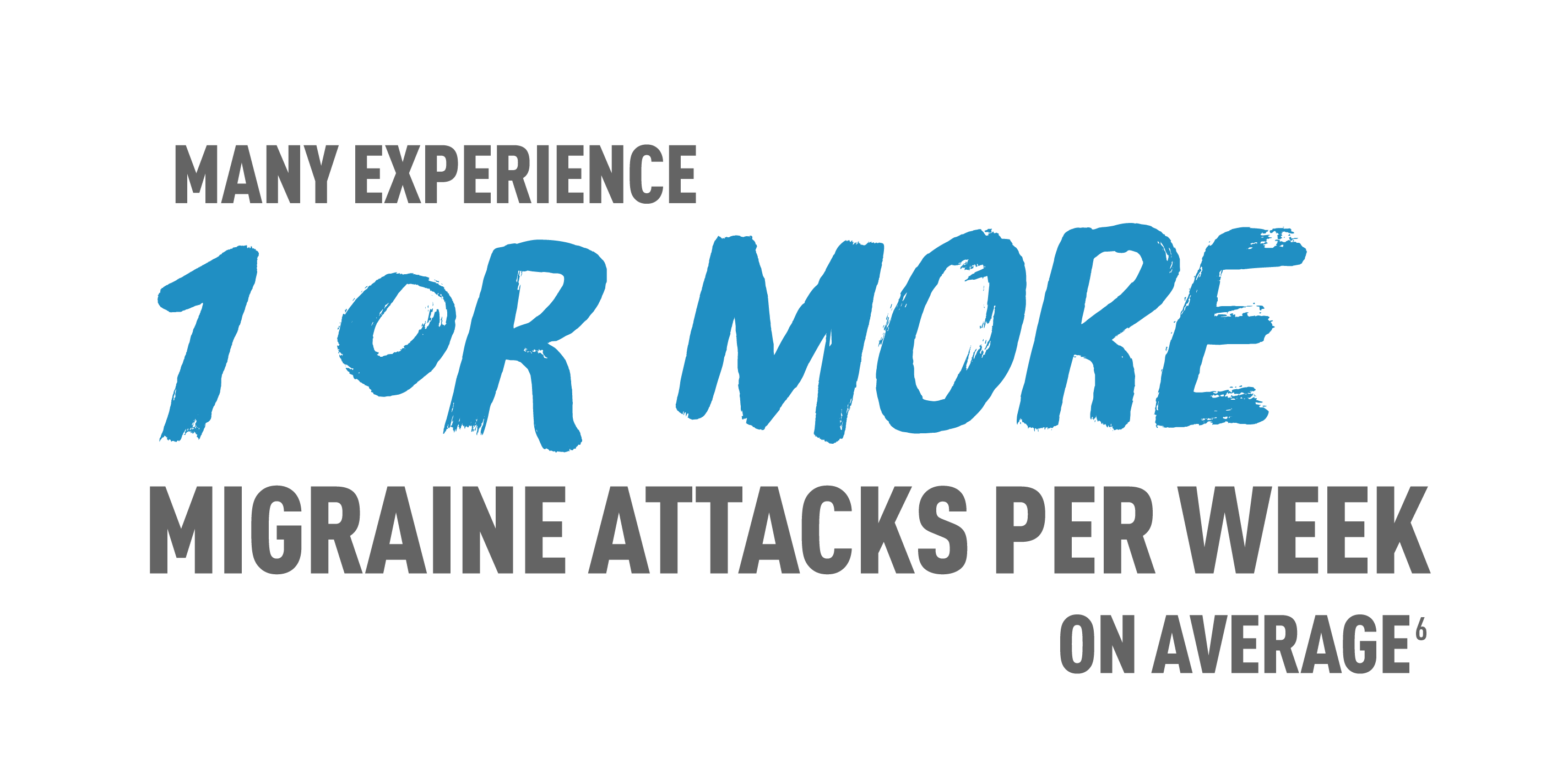Do you know how migraine may impact your patients' lives?
Migraine can impair a person’s ability to function during an attack and in between attacks1,2
For many people living with migraine, attacks do not occur just every now and then.3-5

In fact, about 40% of people reported that they had 1 or more migraine headache days per week on average over the previous three months.5
Migraine causes negative effects on various areas of peoples’ lives, including impact on physical health, social activities, and family life7
| Domain | Impacts |
|---|---|
| Domain: Physical Function7 | Impacts:
|
| Domain: Everyday Activities7 | Impacts:
|
| Domain: Social/Relationship/Leisure Activities7 | Impacts:
|
References:
- Lantéri-Minet M, Duru G, Mudge M, Cottrell S. Quality of life impairment, disability and economic burden associated with chronic daily headache, focusing on chronic migraine with or without medication overuse: a systemic review. Cephalalgia. 2011;31(7):837-850.
- Kim S, Ishii R, Dumkrieger G, et al. Interictal burden attributed to migraine: an analysis from the American Registry for Migraine Research (ARMR). 62nd Annual Scientific Meeting American Headache Society. Headache. 2020;60 Suppl 1:1-156. doi:10.1111/head.13854\
- Mannix S, Skalicky A, Buse DC, Desai P, Sapra S, Ortmeier B, Widnell K, Hareendran A. Measuring the impact of migraine for evaluating outcomes of preventive treatments for migraine headaches. Health Qual Life Outcomes. 2016;14(1):143. doi:10.1186/s12955-016-0542-3.
- Blumenfeld AM, Varon SF, Wilcox TK, et al. Disability, HRQoL and resource use among chronic and episodic mirgraineurs: results from the International Burden of Migraine Study (IBMS). Cephalalgia. 2011;31(3):301-315.
- Lipton RB, Adams AM, Buse DC, et al. A comparison of the chronic migraine epidemiology and outcomes (CaMEO) study and American migraine prevalence and prevention (AMPP) study: demographics and headache-related disability. Headache. 2016;56:1280-1289.
- Reed ML, Araujo AB, Nicholson RA, et al. Symptom patterns, disability, and physician visits among a US sample of people with migraine: results of the OVERCOME study. Headache. 2019;59(S1):59-60
- Hareendran A, Mannix S, Skalicky A, Widnell K, Corey-Lisle P, Sapra S. EHMTI-0236. A qualitative study of the functional impact of symptoms on migraine patients. J Headache Pain. 2014;15(suppl 1):D53.